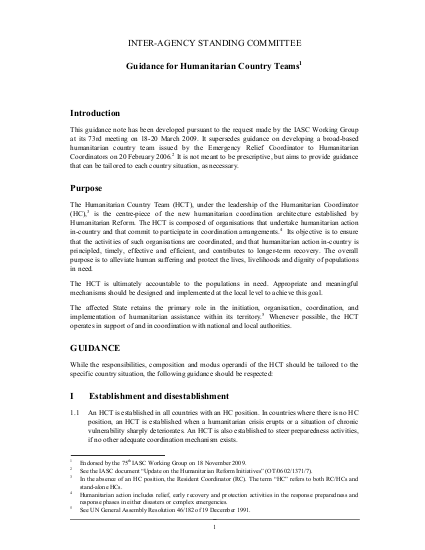
This guidance note has been developed pursuant to the request made by the IASC Working Group at its 73rd meeting on 18-20 March 2009. It supersedes guidance on developing a broad-based humanitarian country team issued by the Emergency Relief Coordinator to Humanitarian Coordinators on 20 February 2006.2 It is not meant to be prescriptive, but aims to provide guidance that can be tailored to each country situation, as necessary.
The Humanitarian Country Team (HCT), under the leadership of the Humanitarian Coordinator (HC),3 is the centre-piece of the new humanitarian coordination architecture established by Humanitarian Reform. The HCT is composed of organisations that undertake humanitarian action in-country and that commit to participate in coordination arrangements. Its objective is to ensure that the activities of such organisations are coordinated, and that humanitarian action in-country is principled, timely, effective and efficient, and contributes to longer-term recovery. The overall purpose is to alleviate human suffering and protect the lives, livelihoods and dignity of populations in need.
The HCT is ultimately accountable to the populations in need. Appropriate and meaningful mechanisms should be designed and implemented at the local level to achieve this goal. The affected State retains the primary role in the initiation, organisation, coordination, and implementation of humanitarian assistance within its territory.5 Whenever possible, the HCT operates in support of and in coordination with national and local authorities.